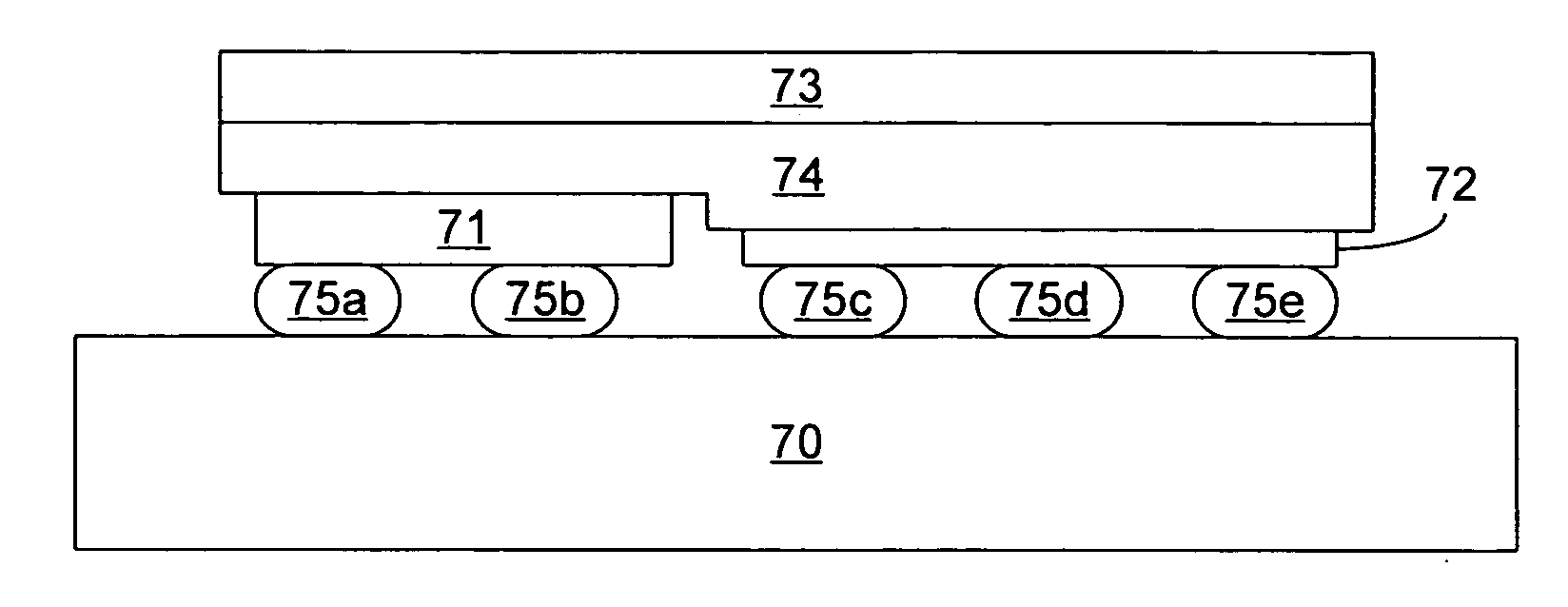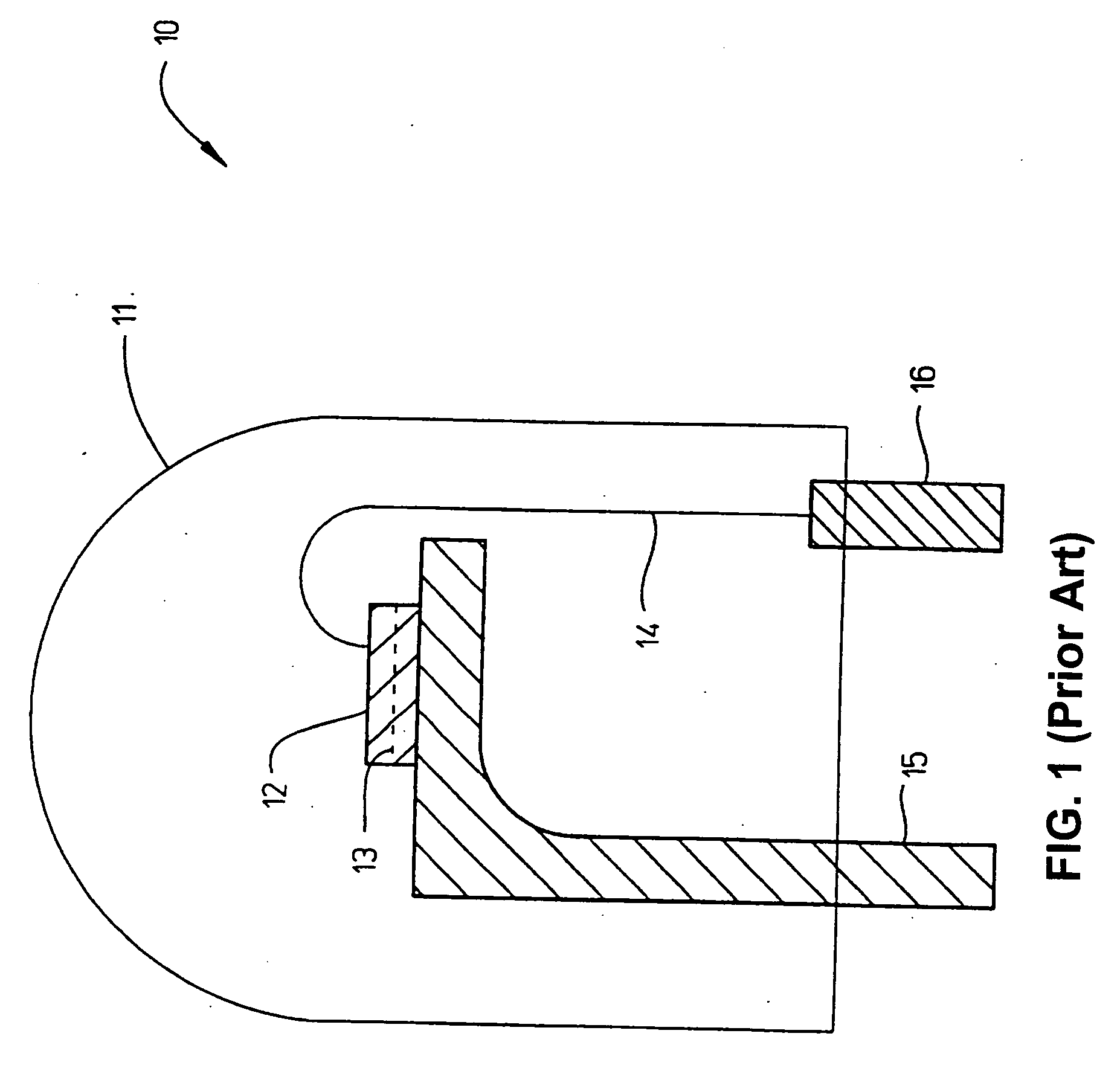Interconnects for semiconductor light emitting devices
- Summary
- Abstract
- Description
- Claims
- Application Information
AI Technical Summary
Benefits of technology
Problems solved by technology
Method used
Image
Examples
Embodiment Construction
[0021]FIG. 4 illustrates a flip chip light emitting device attached to a mount The flip chip device includes a substrate 73 attached to semiconductor device layers 74, which include at least one light emitting or active layer disposed between an n-type region and a p-type region. N-type contact 71 and p-type contact 72 are electrically connected to the n- and p-type regions of semiconductor structure 74. Semiconductor structure 74 is connected to mount 70 via contacts 71 and 72 by several metal-to-metal interconnects 75a-75e. Mount 70 may be any suitable material including, for example, metals such as copper, semiconductors such as Si, ceramics such as alumina or AIN, or composite mounts such as printed circuit boards and metal core printed circuit boards.
[0022] Metal interconnects 75a-75e are often Al, Au, Cu, or Ni. The interconnects are formed in a stud bumping process where thin metal layers (not shown) are formed on both mount 70 and contacts 71 and 72 at the site of each inte...
PUM
 Login to View More
Login to View More Abstract
Description
Claims
Application Information
 Login to View More
Login to View More - R&D
- Intellectual Property
- Life Sciences
- Materials
- Tech Scout
- Unparalleled Data Quality
- Higher Quality Content
- 60% Fewer Hallucinations
Browse by: Latest US Patents, China's latest patents, Technical Efficacy Thesaurus, Application Domain, Technology Topic, Popular Technical Reports.
© 2025 PatSnap. All rights reserved.Legal|Privacy policy|Modern Slavery Act Transparency Statement|Sitemap|About US| Contact US: help@patsnap.com



